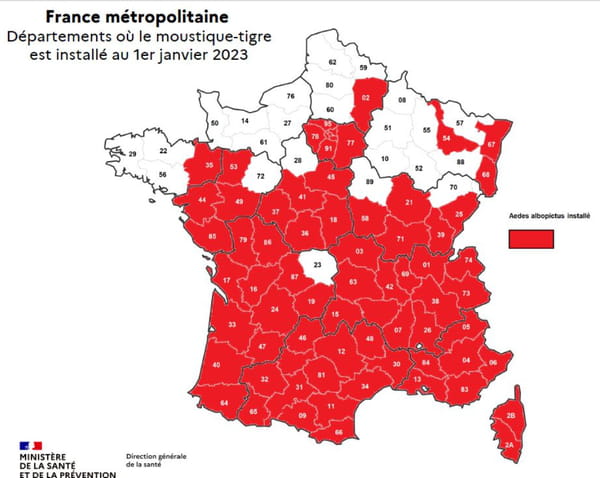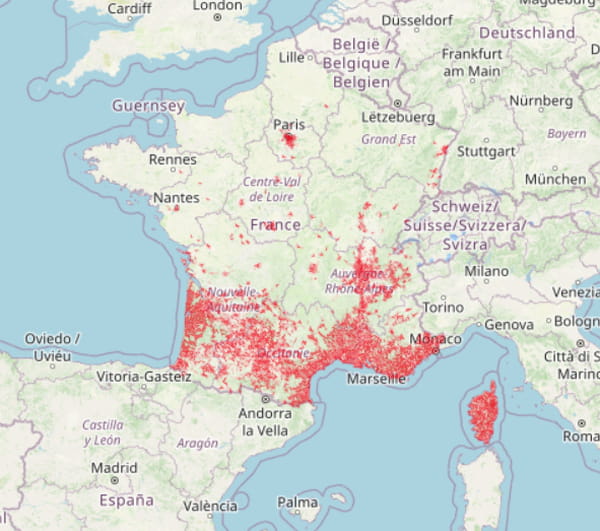The tiger mosquito is now present in many municipalities in France. A new map from the authorities lets you know if your department, your municipality or your neighborhood is invaded by this invasive species.
The French are increasingly aware of the threat posed by the tiger mosquito in France. For several years, experts and authorities have been warning and asking citizens to report the presence of this mosquito in their home or in their garden. Recognizable by its characteristic white stripes, it is however difficult to detect with certainty, so much so that a map of the departments and municipalities affected may prove useful.
To find out where it is present, the authorities have put online a map of the presence of the tiger mosquito on French territory. The insect is already established in 71 departments of France and continues to progress. For example, there was only one affected department (the Alpes-Maritimes) in 2004 and “only” 18 ten years ago, in 2013.
In the latest surveys, there are several new settlements in Brittany and particularly in Ille-et-Vilaine, where a commune (Domagné) is already considered “colonized”, putting the department in the red. Allier, Haute-Loire and Loir-et-Cher are also added this year to the new departments affected.
“Once installed in a municipality or department, it is practically impossible to get rid of it,” reports ANSES. on his website dedicated to mosquitoes. However, out of the 71 departments concerned, 13 are now considered “heavily colonized”, that is to say where at least “40% of the municipalities in the department” are invaded. These are Lot et Garonne, Tarn-et-Garonne, Eastern Pyrenees, Hérault, Gard, Vaucluse, Bouches-du-Rhône, Var, Alpes-Maritimes, Rhône, Corsica from Paris and Hauts-de-Seine.
Another map, which has benefited from a more recent update, offers data by municipality. This map, made public on September 8, makes it possible in particular to identify all of the “colonized” communes of France, down to the smallest neighborhood. ANSES services have even deployed a search engine so that everyone can find out if the tiger mosquito has invaded their living space, thanks to extensive updating work.
The small insect can cause real harm, given its ability to transmit zika, dengue or chikungunya in certain cases.
If you live in a town affected by the colonization of the tiger mosquito, you are invited to adopt good habits to fight against its proliferation. Some advice is given by ANSES:
- Cups under flower pots, vases: empty them regularly (at least once a week) or remove them
- Buckets, garden equipment, various containers: empty them then turn them over, or put them out of the rain.
- Water collection containers: cover them with mosquito net or fabric, ensuring that mosquitoes cannot access the water.
- Ornamental pond: introduce fish, which will eat the larvae.
The Ministry of Health also emphasizes the need to protect yourself against mosquito bites. So, in the event of the presence of mosquitoes, remember to wear long, loose clothing, to arrange your home (mosquito nets on the windows, etc.), to use repellent products: the use of skin repellents remains the most effective option, depending on ANSES, which specifies: “Among the different products offered on the market, not all are optimally effective. The authorities recommend the use of products whose effectiveness is recognized. However, there are precautions for use for certain sensitive audiences (infants and pregnant women in particular)”.


